In
the basin analysis group, we work as partners and encourage interaction
between projects. We meet once a week as a group to discuss our research
findings, and spend time together in the field. Basically, what we ask
of each other is to be committed to hard work, excellence, and to treat
others with dignity. To say the least we are all very friendly and easy
to talk to. So please, if you have any questions about our research or
graduate studies at Purdue, don't hesitate to get in touch with us.
Advisor
Ken Ridgway
Affiliated Faculty
Brenda Beitler Bowen
|
|
|
I'm the one on the left
|
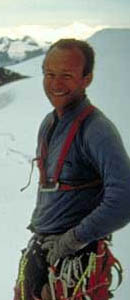 |
|
Icefield Ranges of St.
Elias Mtns.
|
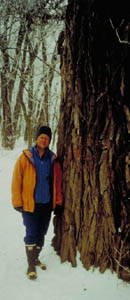 |
|
Virgin Cottonwood tree
along the Wabash Heritage hiking trail
|
 |
Newest member of the
Ridgway clan |
|
|
|
Ken
Ridgway Advisor |
| |
|
The many ongoing projects of the basin analysis group
keeps me pretty much in constant, but enjoyable motion. I'm actively
involved at various levels in all the research projects of our
group. My own personal research has focused on three areas during
the past year: (1) analysis of long-term (Jurassic-Quaternary)
basin development along the Alaska Range suture zone; (2) studying
the structural and depositional configuration of the Pliocene-Pleistocene
foreland basin of Taiwan; and (3) a collaborative effort with structural
geologists, geotechnical engineers, and structural engineers on
the relationship between geological parameters and building damage
in earthquake zones. In the latter project, I was fortunate to
have the opportunity to visit Turkey and Taiwan shortly after the
earthquakes of 1999. The high relief surface ruptures and extensive
building damage in both these earthquakes provide a wealth of data
to help us relate the role of geologic conditions on building damage.
Our goal in this research is to help decrease the tremendous amount
of human suffering associated with earthquakes. For more information
about the first two projects, see our "Research" site.
Teaching is also an important part of my daily
operations. I enjoy teaching both undergraduate and graduate
level courses. I was honored to receive the 1998 School of
Science award for "Outstanding Assistant Professor for
Excellence in Teaching and Research." At the graduate
level, I teach courses on basin analysis, crustal tectonics,
petroleum geology, and sedimentary petrology. Most of my effort
at the undergraduate level is focused on EAS 351, a course
that integrates sedimentology, structural geology, petrology,
and tectonics. The centerpiece of this course is a 10 day Appalachian
field trip starting in the distal deposits of the Pennsylvanian
foreland basin of Kentucky, proceeding through the proximal
foreland basin and thrust belt of Tennessee, and ending on
the metamorphic thrust sheets of North Carolina. Students collect
their own field data from many of the classic field stops of
the southern Appalachians such as Natural Bridge, Pine Mountain
thrust, Thorn Hill section of the Copper Creek thrust sheet,
Bays Mountain syncline, and Ocoee Gourge. This is a trip for
the ages, come join us some October!
E-mail: ridge@purdue.edu
|
| Affiliated Faculty |
| |
|
|
back to top |
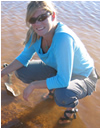
|
|
|
Brenda Beitler Bowen Assistant Professor |
| |
|
My research focuses on the inter-relationships between sediments and fluids in both modern and ancient continental sedimentary environments. I am interested in how fluids and sediments interact on microscopic to regional scales, and how these interactions are affected by differences in depositional environments and hydrogeochemical conditions, structural and tectonic settings, burial history and diagenesis. My work combines field-based studies and analytical laboratory work; including petrography, fluid inclusion analyses, major and trace element geochemistry, stable isotope geochemistry, and reflectance spectroscopy (in situ and remote) to map out spatial changes in authigenic minerals that reflect paleo fluid-rock interactions. This work has important implications for the evolution of petroleum systems and mineral and fluid resources. I am also interested in the sedimentary geology and fluid-rock history of Mars, and study depositional and diagenetic environments on Earth as analogs for potential processes on Mars.
My research projects focus on how specific geochemical, hydrologic, tectonic, climatic and structural conditions affect sediments and sedimentary rocks over time using field-based studies and low-temperature geochemistry to characterize chemical interactions between fluids and sediments. I evaluate the interplay between sedimentary architecture, basin history, and diagenetic alteration, and am especially interested in how both regional and small-scale structural fabrics influence fluid flow and diagenesis. I am interested in how physical, chemical, and even biological systems interact in modern depositional systems to create unique packages of sedimentary rocks, and how evidence of these conditions are preserved in the rock record. I have worked in a variety continental depositional environments, including eolian (dune and interdune), lacustrine, and fluvial facies; both modern (southern Australia) and ancient (Mesozoic of the Colorado Plateau). By mapping out spatial changes in cementation patterns and authigenic mineral precipitates, we can evaluate past fluid-flow pathways that reveal variations petrophysical properties, and elucidate changes in reservoir characteristics. The effects of sedimentary alteration provide new and vital lines of evidence for interpreting both Earth and planetary evolution.
The use of remote sensing in my research provides a new and exciting way to look at regional patterns in alteration that can be related to diagenetic facies that are characterized on petrographic and geochemical scales. Combining laboratory and field reflectance spectroscopic data with remote imaging spectroscopy, basin scale patterns in mineralogy and alteration can be evaluated. Put into the context of overall burial history and regional structure, large-scale paragenesis sequences can help reveal the history of basin evolution. A wide range of tools can be used to examine authigenic minerals in sediments and sedimentary rocks that provide geochemical “fingerprints” of paleo-fluids. Field work and petrography are vital components of all of my research. In conjunction, I use a variety of geochemical techniques (on solids and fluids) including: major, minor, and trace element analyses (using IC, ICP-MS, XRF, XRD, FTIR, etc.), stable isotope analyses, fluid inclusion studies, and VIS/NIR reflectance spectroscopy. All of these data are evaluated in a spatial context using GIS analyses.
Much of my work in the last few years has focuses at least partially on how extreme environments, both modern and ancient, can serve as important Earth analogs to depositional and diagenetic conditions and processes on Mars. An increasing number of remote orbital sensors, and NASA’s Mars Exploration Rovers, continue to provide a weath of images and data on the Red Planet, revealing a world with a rich sedimentological and diagentic history and evidence for abundant sediment-rock interactions. Interpreting these data and images requires a solid and multi-faceted understanding of potentially similar environments on Earth. In addition, studying “biosigatures” in Earth analog environments has implications for evaluating astrobiology and preservation potential for possible life on Mars.
For more information on potential student research opportunities, please contact me!
E-mail: beitl1b@cmich.edu
Website: http://www.eas.purdue.edu/sed
|
| Current
Students |
| |
|
|
back to
top |
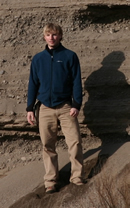
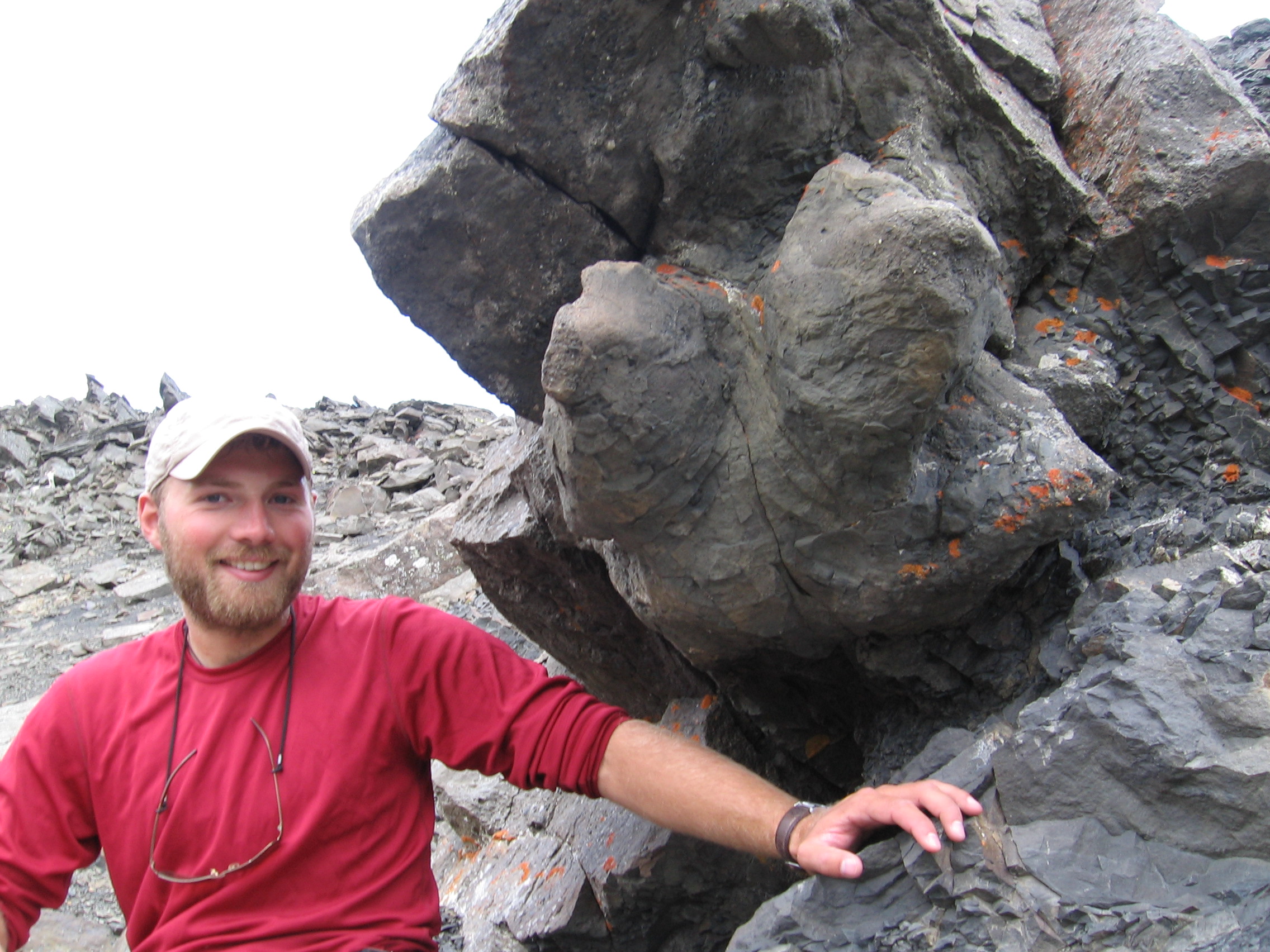
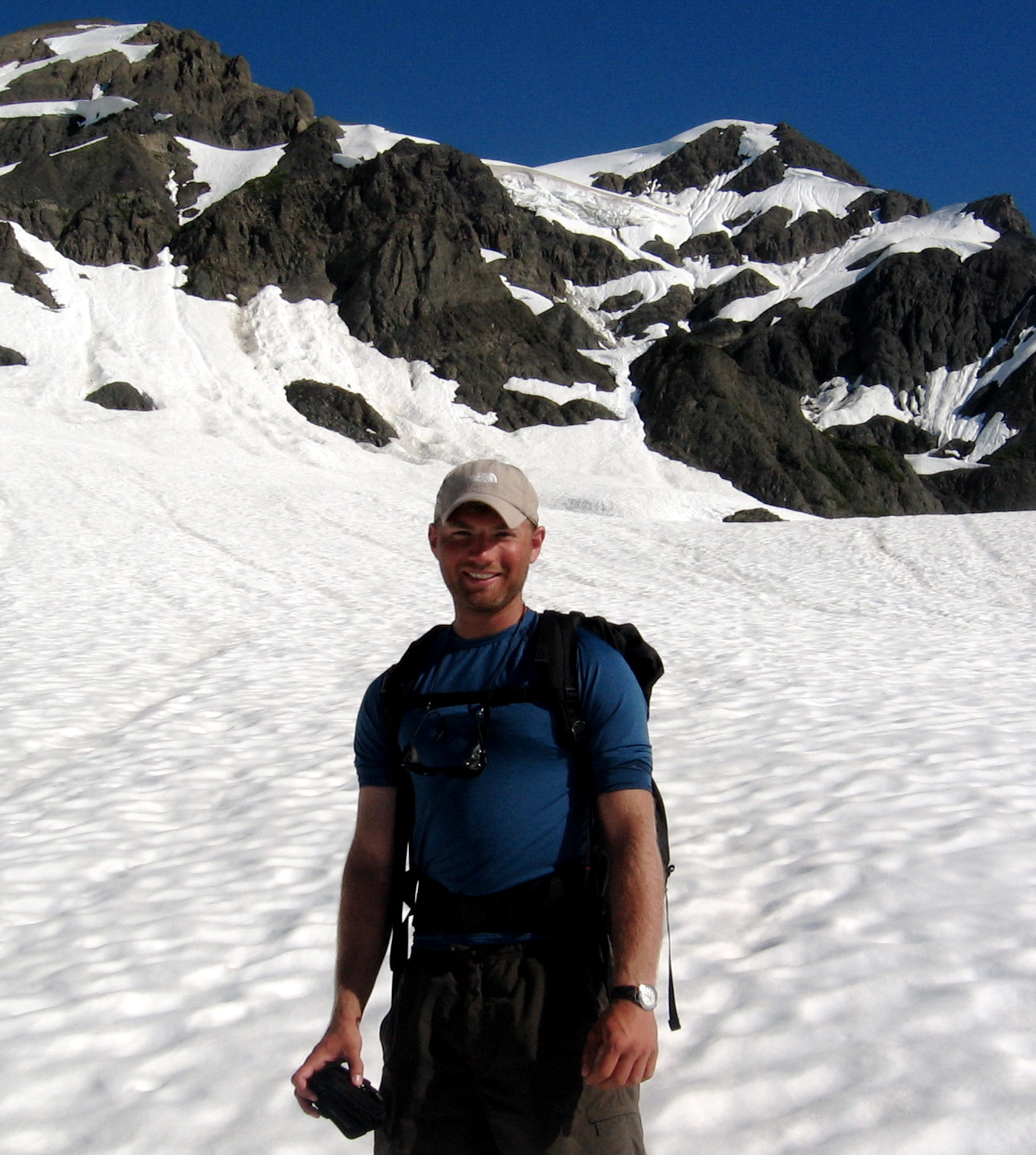
|
|
|
Patrick Brennan Ph.D. Student |
| |
|
I am a second year Ph.D. student in the Basin Analysis Group at Purdue University. My research is focused on the deformational history of the Alaska Range in central Alaska. I plan to incorporate a wide range of geological tools to investigate the multiple phases of deformation that have produced the current configuration of this mountain belt. In particular my research will attempt to discern the links between the surficial geology that we can map and observe in the field and the larger scale geologic and tectonic features of Alaska. Seismological observations allow us to develop ideas about the structure of the lithosphere beneath the Alaska Range, and the possible influence between deep-seated and surface structures. While, numerical modeling of fault geometries and slip-rates across Alaska provides a kinematic model of the Alaska Range. By synthesizing these geophysical observations with geologic ones, it becomes possible to consider the influences of multiple scales as well as multiple phases of deformation across the mountain belt. This study of the Alaska Range will hopefully increase our understanding of collisional tectonics; and by incorporating geophysical and geologic data we are provided with the unique opportunity of observing a mountain belts evolution and structure from its peaks to its deepest roots.
Originally from the Finger Lakes of New York, I received my B.S. in the science of earth systems from Cornell University in Ithaca, NY. There I worked on a project that provided a paleontological and stratigraphic analysis of the upper/middle Devonian contact in the Appalachian Basin of Central New York. The project focused on applying paleontological evidence to help understand paleo-environmental, and evolutionary trends and changes within the basin. I have since then worked on the St. Elias Teconics and Erosion Project (STEEP) in southeastern Alaska, metamorphic core-complex development in southern Arizona, and began my own Ph.D. research described above.
E-mail: prbrenna@purdue.edu
Website: http://web.mac.com/prbrenna
|
| |
|
|
back to top |


|
|
|
Andy
Cyr Ph.D. Student |
| |
|
I am in my second year of the Ph.D. program here. My research is centered on using the radionuclides 10Be and 26Al in Pliocene and younger sediments and sedimentary rocks as a means of studying tectonic and surficial processes in the Apennine Mountains of Italy. These isotopes are produced in quartz at the earth surface (depths <10m) by interaction with high-energy cosmic radiation which is constantly bombarding the Earth. These radionuclides (10Be and 26Al) are measured using the accelerator mass sprectrometer (AMS) at Purdue’s PRIME Lab and, because they accumulate and decay at known rates, can be used to calculate the age of burial, erosion rates across the drainage basin, or the length of time of exposure to cosmogenic rays. Currently I have data pending for several different projects. These include: modern river sediments from the Emiglia-Romagna Apennines south of Bologna for examination of the dominant uplift process (tectonic v. isostatic) in the region; age of uplift and exposure of a marine terrace near La Spezia, and; burial ages of fluvial terraces along the Esino River in Le Marche in order to correlate them with already dated terraces along other Marchean rivers. Future research will focus on exposure dating of a series of 800 ka marine terraces in Calabria and eastern Sicily in order to study the pattern of uplift rate of the region.
Originally from northeastern Massachusetts, I received my B.S. in geology from Allegheny College in Meadville, PA, and an M.S. in geology from Miami University in Oxford, OH. My previous research projects have included a structural and geochemical analysis of Tertiary aged volcanic rocks in the Northern Talkeetna Mountains of Alaska (while at Allegheny), and an evaluation of the Eocene-Oligocene paleoelevation of the northern Tibetan Plateau using stable 18O as determined from lacustrine carbonates.
E-mail: ajcyr@purdue.edu
|
| |
|
|
back to top |


|
|
|
Emily Finzel Ph.D. Student |
| |
|
The Ph.D. project I began in fall ’06 addresses the geodynamics of sedimentary basin development along convergent plate margins. The combination of field-based geologic studies and computer-aided numerical modeling provides a robust tool for evaluating the geodynamics of sedimentary basin development along convergent margins. Analysis of surface geologic features in the field provide building blocks and realistic constraints for numerical models that in return help us to understand the present state of strain at the Earth’s surface. The Cook Inlet forearc and the Bristol Bay retroarc basins of southern Alaska collectively contain over 8000 m of hydrocarbon- and coal-rich Miocene and Pliocene strata. These strata provide a database that can help us understand the growth of first order tectonic features along this convergent margin, such as volcanic arcs and accretionary prisms. Exhumation and growth of these first order tectonic features is directly linked to subsidence and sediment supply in adjacent sedimentary basins.
The first objective of this research is to better refine the stratigraphic framework for the Neogene formations in both these basins in order to filter out local versus regional controls on basin subsidence and sediment supply. A second objective is to develop a geodynamic model of the region through numerical modeling constrained by geophysical and field-based observations. An important component of the modeling will be to test the role of the Neogene collision of the Yakutat terrane along the southern margin of Alaska as it relates to the development of the Bristol Bay and Cook Inlet sedimentary basins.
A Midwesterner at heart, I was born and raised in southeast Wisconsin where I received a B.S. in Geology at the University of WI – Milwaukee in 2001. I subsequently completed the M.S. program at the University of Alaska – Fairbanks in 2004, where I studied the origin of Cretaceous conglomerate exposed on in a growth syncline in the northern Brooks Range foothills; central in this project was the defining the relationship between timing of deposition of the conglomerate and deformation of the anticline. During graduate school at UAF, I was a geological intern at the Alaska State Geological Survey and I accepted a full-time position there upon completion of the M.S. program. Ultimately, I decided to go back to school to pursue a Ph.D. in the basin analysis group at Purdue. Summer ’07 was spent doing fieldwork in the Cook Inlet basin and interning for Chevron-Texaco, Inc. in Anchorage, AK.
E-mail: efinzel@purdue.edu
|
| |
|
|
back to top |
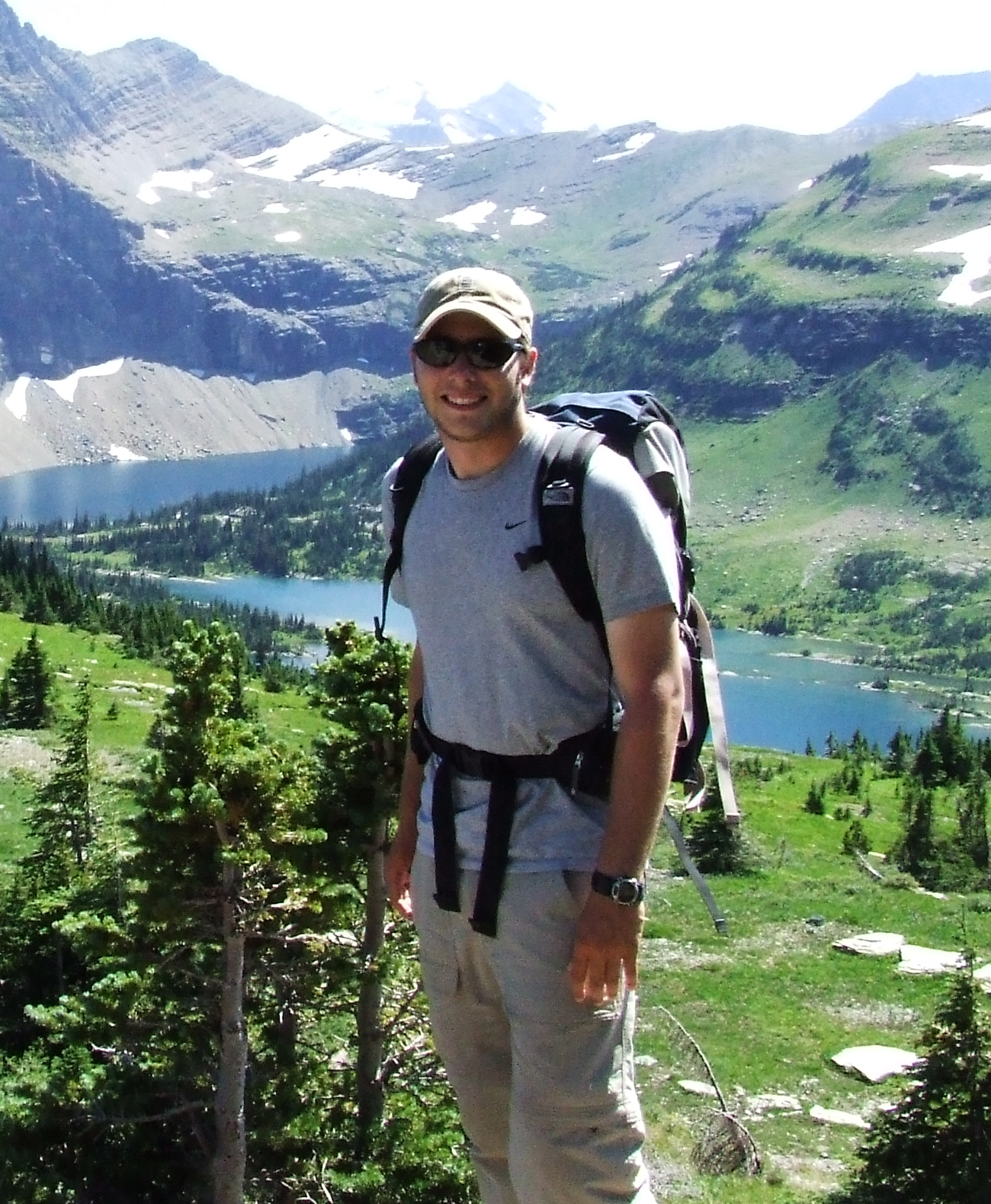
|
|
|
Nick Fischietto Masters
Student |
| |
|
I am in the first year of my M.S. degree in geology at Purdue. While I have not yet decided on a particular thesis topic, my main research interests include clastic sedimentary systems, sedimentary responses to tectonic processes, and basin evolution.
I grew up in northeastern Ohio and received my B.S. in Geology from Allegheny College in Meadville, PA. While at Allegheny, I was involved in research on Eocene forearc magmatism, structural deformation related to the accretion of the Wrangellia terrane, and provenance analysis of a deformed accretionary prism mélange, all in south-central Alaska. Additionally, I worked on Tertiary clastic sedimentary systems in southwest Montana.
E-mail: nfischietto@purdue.edu
|
| |
|
|
|
|
|
|
Christie Lindemann Masters Student |
| |
|
I am in the second year of my graduate work at Purdue University. My research focuses on observations and interpretations of systematic outcrop-scale fracture patterns within conglomerates of Eocene-Miocene synextensional sedimentary strata of the Titus Canyon Formation in the Grapevine and Funeral Mountains of SW Nevada and SE California. While conducting field investigations in this complex region, I collect measurements and descriptions of deformational features in an effort to further develop structural, tectonic, and stratigraphic frameworks. Analysis of kinematic indicators within these fracture systems involves applications of laboratory-derived and theoretical approaches to fracture mechanics and rock strength. With further analysis, I believe that future work may lead to a better understanding of the source, timing, and mechanisms associated with these deformational features.
I am originally from a small town near Riverside, California. In 2002, I completed a B.S. in Earth Sciences at the University of California, San Diego. From 2002 - 2006, I worked at Scripps Institution of Oceanography in a lab dedicated to sedimentology, stratigraphy, and shallow-water seismic interpretation. During this time, I participated in a variety of interesting projects and had the opportunity to map shelf morphology and sub-surface architecture, describe cores, and assist in data acquisition, data quality, and equipment deployment/recovery during research cruises. I feel that these experiences have prepared me to analyze, interpret, and integrate several types of data, as well as appreciate the expertise, communication, and collaboration that can only be provided by a diverse scientific community like the Department of Earth and Atmospheric Sciences at Purdue University.
E-mail: clindemann@purdue.edu
|
| |
|
|
|
|
|
|
John Witmer Masters Student |
| |
|
I am starting my first year in the M.S. program at Purdue. My research
is part of the collaborative St. Elias Erosion and Tectonics Project
(STEEP), an NSF-funded project that examines the relationship between
climate and tectonics of the allochthonous Yakutat terrane in southeast
Alaska. More specifically, I am focused on the Miocene-Pleistocene aged
Yakataga Formation, a ~5000 meter-thick glacial-marine sedimentary unit.
With the use of measured sections, lithofacies analysis, palynology,
stable isotopes, and provenance analysis with U-Pb detrital zircon
dating, the tectonic evolution and onset of alpine glaciation can be
determined. Additionally, the deposition of the Yakataga Formation
coincides with volcanism inboard in the Wrangell Mountains, likely
caused by oblique subduction of the Yakutat terrane beneath
south-central Alaska. Understanding the relationship between these
processes will be vital in constructing a detailed tectonic history of
Alaska through the Neogene and more broadly, a detailed structural
cross-section across Wrangell-St. Elias National Park.
I am originally from the village of Purchase Line in Western
Pennsylvania. At Bucknell University in Lewisburg, Pennsylvania, I
received a B.S. in environmental geology. My undergraduate thesis
involved the first detailed stratigraphic, paleontologic, geochemical,
and geochronologic analysis of deep-marine carbonate strata of the Upper
Triassic - Lower Jurassic McCarthy Formation. During my spare time I
enjoy being outdoors and exploring the vast and mysterious wilderness
that is rural Indiana.
E-mail: jwitmer@purdue.edu
|
| |
|
|
|
| Alumni |
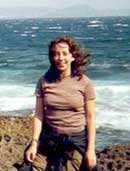 |
|
|
Lauren Bierly M.S. '04 |
| |
|
Lauren is Earth Scientist for Chevron International Exploration & Production. Her current project involves seismic interpretation and subsurface mapping of prospects for exploration and appraisal wells in Angola. For something completely different, in late January 2008 she will be moving to Midland, TX to do development geology in the McElroy field.
Email: lbierly@chevron.com |
| |
|
|
back to top |
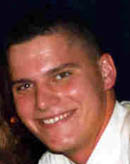 |
|
|
Kevin
Eastham M.S. '02 |
| |
|
I'm now a Development Geologist on Chevron's Wyoming Asset Development team. I work on various assets we have around the Green River Basin in SW Wyoming and NW Colorado. My main responsibilities include identifying infill drilling locations, identifying behind-pipe potential in existing wells, and proposing drill locations to new/deeper targets.
Onshore development includes collaboration with many different disciplines which definitely keeps things interesting. Regulatory specialists, landmen, surface owners, BLM biologists, state oil and gas commissioners, lawyers, and a whole host of engineers (drilling, reservoir and facility just to name a few). The Wyoming wildlife also plays a big role in our operations. Can't drill where the birds are nesting! (or the sage grouse, or the pygmy rabbits, or the ferrets, or the burrowing owls) I get to travel to Wyoming and Colorado on a regular basis to log wells with Schlumberger crews. Have to keep an eye on the green engineers Schlumberger sends to the wellsite straight from school. It's a shame when the rig goes down or a tool gets stuck and I have a day to hit the Uintas or the Wind Rivers.
E-mail: KEastham@chevron.com
|
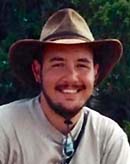 |
|
|
Eric Farmer M.S. '04 |
| |
|
Eric is currently a Senior Research Geoscientist and visualization expert at ExxonMobil Upstream Research Company working with their Fracture Prediction and Flow Modeling Team. His current project
focuses on the development of distinguishing seismic methods and visualization workflows that allow for better detection, imaging, and quantification of aspects of fracture networks such as fracture
density and fracture orientation. Eric is also involved with the EMURC carbonate intern program and is actively involved in carbonate research that has allowed him to do field work in the modern and ancient carbonate settings of the Bahamas/Turks and Caicos and West Texas respectively.
Email: eric.t.farmer@exxonmobil.com |
| |
|
|
back to top |
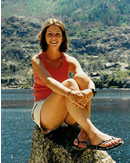 |
|
|
Michele
Gutenkunst M.S. '06
|
| |
|
Michele Gutenkunst is working as an earth scientist for Chevron International Exploration and Production on the Nigeria/Mid-Africa Regional Geology Team. Currently, Michele is conducting a post-drill analysis of a well in the outer fold and thrust belt of the Niger Delta using seismic and well log data. This analysis will be evaluated along with the results of other wells in the outer fold and thrust belt and integrated with the regional picture to assess the remaining exploration potential for this trend in deepwater Nigeria.
Now that Michele lives in Houston she can play soccer year round with a city full of soccer enthusiasts rather than trying to teach Ken the finer points of playing soccer.
E-mail: mgkd@chevron.com
|
| |
|
|
back to top |
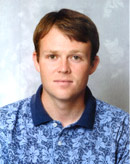
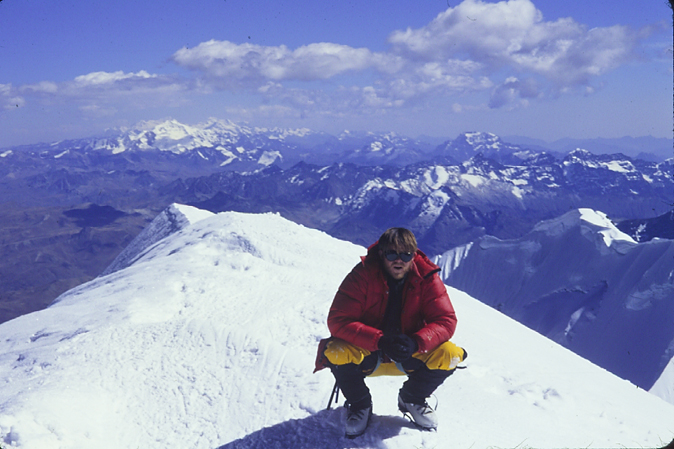
|
|
|
Brian
Hampton Ph.D. '06 |
| |
|
Brian is a faculty member in the Department of Geological Sciences at Michigan State University. Brian teaches courses in sedimentology and basin analysis and has an active research program. He is currently doing research in Alaska and the Russian Far East. Brian was the power forward on the basin analysis noon basketball game.
E-mail: bhampton@msu.edu |
| |
|
|
|
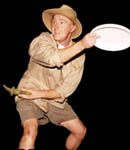 |
|
|
Rick
Hoy M.S. '96, Ph.D. '00 |
| |
|
Rick is currently working for the Chevron Canada Business unit in the East Coast New Ventures team. He is focused on developing an exploration strategy for understanding the complex rift geometries and history from sparse 2D seismic data around Greenland.
E-mail: ghoy@chevron.com
|
| |
|
|
back to top |
|
|
|
Paul Landis M.S. '07 |
| |
|
Paul Landis recently started working for Chevron in Houston. His first assignment is the deepwater Wilcox trend in the westernmost part of the Gulf of Mexico.
Paul was a member of the basin analysis team that worked in the St. Elias Mountains. He spent many days stuck in his tent due to the miserable weather that characterizes this part of Alaska. One stormy field season he read the epic length book “Lonesome Dove” three times - true story!!!!
E-mail: PLandis@chevron.com
|
|
|
|
Jay
Kalbas Ph.D. '06 |
| |
|
Jay Kalbas is a Senior Petroleum Geologist for ExxonMobil Corporation. He is currently working conventional and frontier gas plays in the Green River Basin, Wyoming for the EM US Production Co. Jay recently finished an Angola development assignment and is scheduled to begin work in the "New Play Concepts" team in the Upstream Research Company in May-08.
Email: jay.l.kalbas@exxonmobil.com
Website: http://web.ics.purdue.edu/~jkalbas/
|
| |
|
|
|
| |
|
|
back to
top |
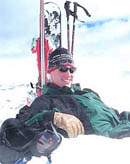 |
|
|
Mark
Lesh M.S. '02 |
| |
|
I am a freelance illustrator based out of Boulder, Colorado. I specialize in maps, scientific, and outdoors recreation illustration.
My clients include Skiing, Powder, and Paddler magazines, Gem Guides Books, and the International Mountain Bicycling Association. See my work at www.a-framemaps.com. I love the freelance lifestyle because the flexible schedule allows me to focus on my true passions - skiing and fly fishing.
E-mail: mark@a-framemaps.com |
| |
|
|
back to
top |
|

|
|
|
Jeff
Manuszak M.S. '00 |
| |
|
Jeff is working
for Malcolm-Pirnie, an environmental/geotechnical consulting firm
in Phoenix, Arizona. Jeff's main responsibilities are shallow subsurface
analysis, incorporation of geological parameters into groundwater
models, and developing GIS databases. Jeff remains an active kayaker;
he perfected his Eskimo roll on the mighty Tippecanoe River east
of Purdue.
Phone: (602) 231-5595
E-mail: jmanuszak@pirnie.com
|
| |
|
|
back to
top |
 |
|
|
Danielle
Murray M.S. '02 |
| |
|
Daniel
is working at Environmental Resources Management (ERM), an environmental
consulting firm in Exton, PA. She is part of the Site Investigation
and Remediation team at ERM, and serves as a project geologist on
various groundwater and soil investigations.
E-mail: danielle.ighemat@erm.com
|
| |
|
|
|
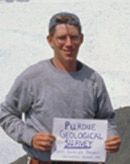 |
|
|
Jeff
Trop M.S. '96, Ph.D. '00 |
| |
|
Jeff is a faculty
member at Bucknell University in Lewisburg, Pennsylvania. At Bucknell,
Jeff teaches sedimentology/stratigraphy, paleontology, and historical
geology. He also continues to do research on forearc basins and
on the tectonics of southern Alaska. Jeff was the point guard for
the basin analysis noon basketball game and continues to play at
Bucknell. Fortunately, at Bucknell he sometimes gets the ball back
after passing it since he is not passing to ballhogs like Ken Ridgway
and Jim Riley.
Phone: (570) 577-3027
E-mail: jtrop@bucknell.edu
|
| |
|
|
back to
top |
| |
|
